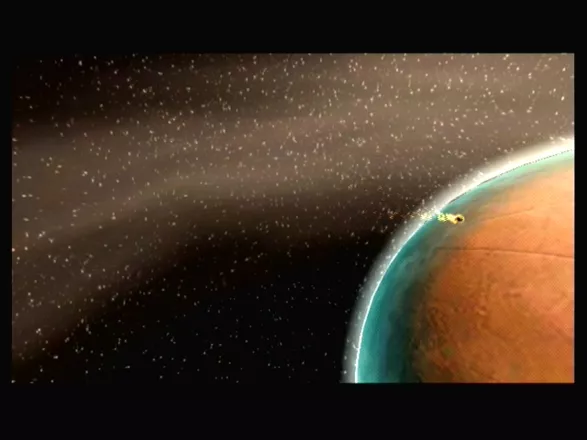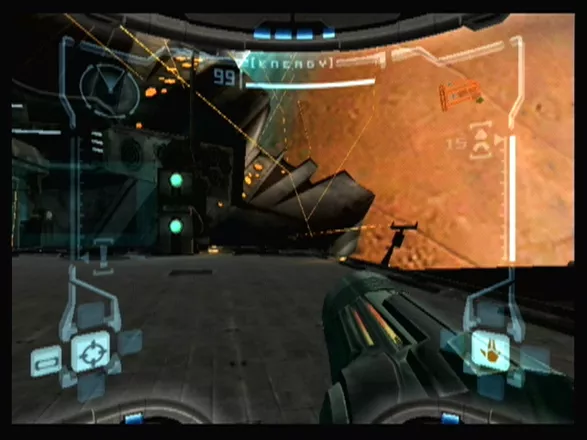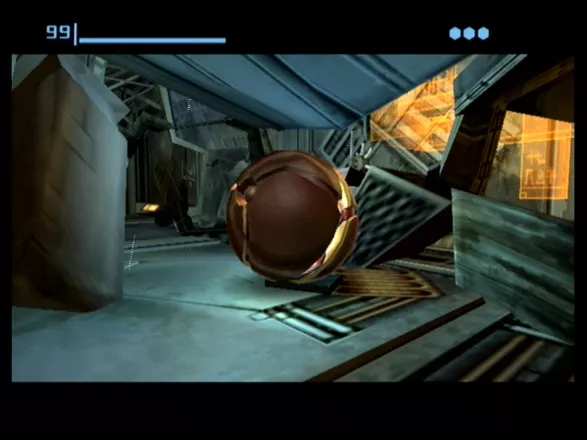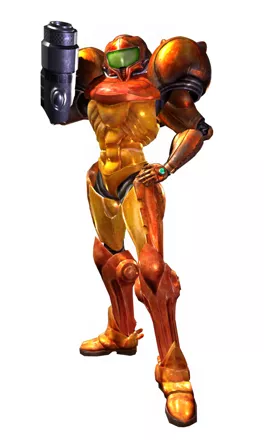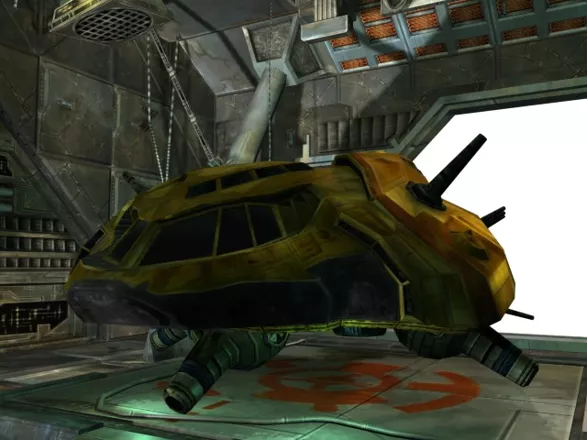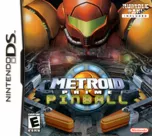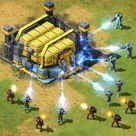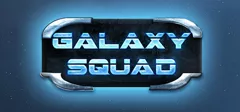Metroid Prime
Description official descriptions
Long ago, a bird-like race of creatures (called the Chozo) became extremely advanced technologically, but due to increasing violence in the universe, they began to hide and live more simple lives. The planet Tallon IV was the site of one of their colonies. Years later, a meteor crashed on Tallon IV releasing the strange element Phazon into the planet. Phazon poisoned anything it came in contact with, causing the plant and animal life to either die or mutate into a hideous form.
The Chozo tried to control the power of Phazon but failed. Before abandoning the planet, they were able to cover the impact crater with a temple and seal Phazon into the planet's core. Now space pirates have discovered Tallon IV, moving in to study Phazon and harnessing its power. They have also begun rebuilding their fortress on planet Zebes and reviving the Mother Brain, Ridley, and Kraid, all of whom were destroyed by Samus Aran. However, Samus has tracked the space pirates to Tallon IV and must now enter the planet to destroy them once and for all before they have a chance to rebuild their destructive forces...
Metroid Prime is a change from the platform-adventuring series, entering the first-person shooter genre for the first time. Players are now behind Samus Aran's visor and must use all their resources to investigate the pirate infestation of Tallon IV. Players can use Samus's beam, with missile and charge capabilities. Along the way, they must recover the bounty hunter's lost abilities like the morph ball and grapple beam, which allow them to reach unexplored areas of Tallon IV. Players must piece together the story of the fallen Chozo to figure out what has happened to the poisoned planet and prevent the pirates from using the Phazon to wreak havoc throughout the planets.
Spellings
- メトロイドプライム - Japanese spelling
- 银河战士 - Chinese spelling (simplified)
- 메트로이드 프라임 - Korean spelling
Groups +
Screenshots
Promos
Videos
Add Trailer or Gameplay Video +1 point
See any errors or missing info for this game?
You can submit a correction, contribute trivia, add to a game group, add a related site or alternate title.
Credits (GameCube version)
123 People (101 developers, 22 thanks) · View all
| Executive Producer | |
| Producer | |
| Lead Designer | |
| Senior Designers | |
| Designers | |
| Lead Engineer | |
| Technical Lead Engineers | |
| Senior Engineers | |
| Engineers | |
| Lead Artist | |
| Senior Artists | |
| [ full credits ] | |
Reviews
Critics
Average score: 96% (based on 94 ratings)
Players
Average score: 4.1 out of 5 (based on 228 ratings with 16 reviews)
The Good
There is nothing to dislike about this game, it is such a perfect piece of gaming history. Once you have played this stunning adventure every other first person game is instantly exposed as a boring piece of faecel matter. Those critical of it point to it's flawed control system which is utter nonsense. At first it is alien to the usual 1'st person controls but over time it becomes as unique as the game itself. The simple lock on mechanism invites you to explore new tactics in defeating enemies and the game is the first to ever properly allow you to jump.
The way that Samus' abilities are re-introduced to you and their timing make the whole journey so fresh and interesting. There is a lot of backtracking and trying to work out the best way to go using the map system was a little frustrating but the acquisition of a new skill such as the double jump make it quicker and more enjoyable.
You notice the 'Nintendo' difference when rolling Samus into a ball for the first time and enjoying not just the ability but the wonderful physics involved with just this tiny part of the game. Also the different views of the visor, which have been seen to some degree in other games but haven't affected the game as much as here. You need certain visors to access different parts of this game. I will never forget the feeling of being totally lost and isolated only to recieve a visor upgrade which allows you to see beyond the enclosed walls around you to your escape. Wondrous. This is the only game to ever keep me awake at night with the enemies and journey racing through my mind.
The Bad
Maybe the ease of use of the map, the 3d method is necessary but needed to be easier to control.
The Bottom Line
The God of games.
GameCube · by Gareth Day (7) · 2004
The Good
Retro have made a stylish job of updating this Nintendo classic to 3D. The map system - a scalable, rotatable wireframe model showing doors, save points etc. - is one of the best to grace any game on any platform, and is an invaluable tool for exploration of the massive but lonely world of Tallon. The gadgets and weapons are great, too - from Samus' ability to turn into a Sonic The Hedgehog-style 'Morph Ball' to the awesome visor system (enabling the player to see in x-ray or infra-red, for example). These features would, of course, be simple eye-candy without great design which Metroid Prime, fortunately, has in abundance. The designers have incorporated a huge number of mini-puzzles which must be solved in conjunction with the gear at Samus' disposal, and serve to make MP so much more than just another run-of-the mill FPS or platformer. For the completists out there, Samus' scanner can be used to check the facts and figures on every enemy and countless environmental features, at once providing further gameworld immersion and hints on solving puzzles or killing bosses. The amount of detail is staggering, as are the the graphics and sound (it is really worth playing with a Pro-Logic II system).
The Bad
The controls, whilst becoming second nature after several hours of play, are not particularly intuitive and may cause frustration in those players without a strong handle on the GameCube's controller. Be warned: Metroid Prime is quite difficult in places, although it is certainly worth persevering. Players expecting a classic FPS will also be out of luck - this game rewards those who seek to take in every inch of Tallon at their leisure, drinking in the lore of the planet's lost civilisation whilst obliterating its fantastic array of inhabitants. It's a shame, though, that Retro chose to stick with the cliched Fire Level Ice Level Forest Level design pattern, however well each has been executed.
The Bottom Line
Progress hinges on exploration and the aquisition of new gadgets and abilities (an early pair of 'double jump' boots, for example, enables Samus to reach otherwise inaccessible ledges) and it is this mechanic which players will either love or hate, as an amount of backtracking and seemingly aimless wandering is inevitable. Most gamers seem to love it, and it is definitely worth giving it a try.
GameCube · by Paul Jones (274) · 2004
Game of the year? More like game of the decade!
The Good
Very seldom can you trust superlatives in a game review. Surely, you can't believe that Metroid Prime is so incredibly good that it's possibly the finest game ever made for any system. I was skeptical, too. Well, believe it, because Metroid Prime is quite simply a modern-day masterpiece. The graphics are astounding, and the level design is pure genius. There are a great deal of clever tricks to be performed, and a nice array of secret areas. And for those (like me) who were skeptical of the transition to 3D, be assured that the game doesn't lose any of that classic Metroid gameplay, and in fact gains something in the addition of the third dimension. After playing Prime, you'll swear the series was born to be in 3D. Topping off all the goodness is the polish of the game. Retro Studios went the extra mile to add a bunch of subtle effects that add to the atmosphere, making this one of the most immersive games ever.
The Bad
There's not much to dislike, but if I had to really stretch, I'd say two things are kind of downers: 1) it's sometimes difficult to aim at enemies way above or below you, and 2) there is a lot of backtracking. These complaints are minor as 1) the battles are easy and 2) there is so much eye candy and new areas to explore that backtracking hardly seems like a chore.
The Bottom Line
This is classic 2D Metroid brought into the third dimension. It's amazing, it's detailed, it's exciting, and it's a very lengthy adventure. This is an absolute must-have.
GameCube · by Brian Benway (2) · 2002
Trivia
1001 Video Games
The GameCube version of Metroid Prime appears in the book 1001 Video Games You Must Play Before You Die by General Editor Tony Mott.
Development
Nintendo gave the development of Metroid Prime to the U.S. based Retro Studios in part due to the fact that the Metroid series, while being incredibly popular in the United States, has never sold as well in Japan.
Retro Studios also worked on a role-playing game for GameCube called Raven Blade of which a video was shown during E3 2001. However, in late 2001, it was announced that the game was canceled by Nintendo so that focus would be more on Metroid Prime. As a result, an unspecified amount of workers were laid off.
Manual
The manual has an amusing problem. Like in many of the Nintendo manuals, there is a lined page for the player's own notes, but the page has light lines on a very dark background. This makes most pen marks practically invisible, so the page is almost useless for its intended purpose (this applies to the Finnish/Swedish original release manual, at least).
Metroid Fusion
After finishing Metroid Fusion on the GBA, and linking up to a GameCube: * A new suit will be available * It will be possible to play the original Metroid on the GameCube
References
Kraid, from Metroid, was originally intended to make an appearance in Metroid Prime as a boss and was modeled and skinned by Gene Kohler for that purpose. However, time constraints prevented it from being included in the final version of the game. Though the beta version displays him inside Phazon Mines, according to Kohler, he was in fact replaced by the Omega Pirate. Kraid is referenced, however, in Metroid Prime. One of the tanks in the Space Pirate's base suggests that one of the Pirate's experiments is to recreate the creature. Body parts in the vat appear to be Kraid's. Of note is the head, since it appears to be covered by a metal dome in the picture.
Screw Attack
While many of Samus' signature moves are present in Metroid Prime, the infamous screw attack is strangely missing. Fans speculate that this is due to difficulties meshing it with the first-person perspective of the game. The screw attack does appear in Metroid Prime 2: Echoes.
Awards
- 4Players
- 2003 – Best Console Action Game of the Year (GameCube)
- Electronic Gaming Monthly
- February 2006 (Issue #200) - #52 in the "Greatest Games of Their Time" list
- GameSpy
- 2002 – Game of the Year
- 2002 – GameCube Game of the Year
- 2002 – GameCube Game of the Year (Readers' Choice)
- 2002 – Best Music of the Year (GameCube)
- Golden Joystick Awards
- 2003 - Runner up as GameCube Game of the Year (after The Legend of Zelda: The Wind Waker)
Information also contributed by ~~, Mark Ennis, Steve Thompson, Tiago Jacques, and WWWWolf .
Analytics
Upgrade to MobyPro to view research rankings!
Related Sites +
-
Metroid Prime
Nintendo's Official Site. -
Metroid Wiki
A Wiki site for the Metroid series.
Identifiers +
Contribute
Are you familiar with this game? Help document and preserve this entry in video game history! If your contribution is approved, you will earn points and be credited as a contributor.
Contributors to this Entry
Game added by Servo.
Wii added by gamewarrior.
Additional contributors: Unicorn Lynx, Guy Chapman, gamewarrior, Big John WV, Cantillon, Patrick Bregger, piltdown_man, Rik Hideto, FatherJack.
Game added November 20, 2002. Last modified January 22, 2024.




